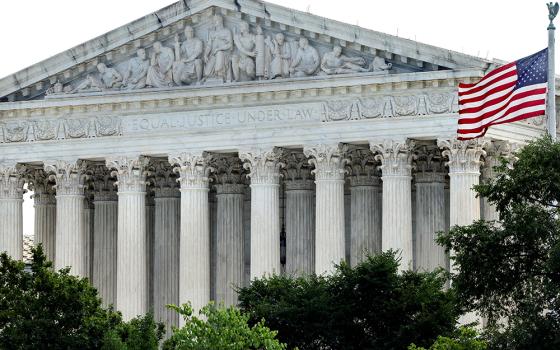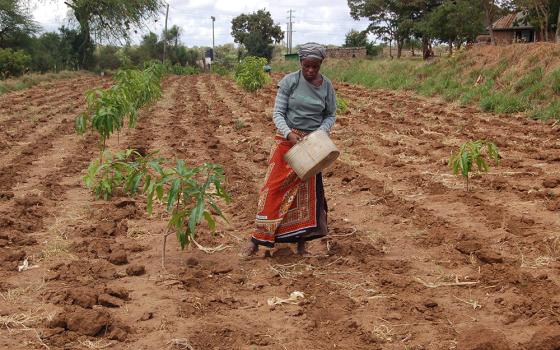Fr. Seán McDonagh is in Durban, South Africa, reporting on the UN Climate Change Conference 2011. He will be providing updates throughout the conference. On Monday, McDonagh attended the opening address by South African President Jacob Zuma.
The United Nations climate change conference at the Conference of the Parties 17 (COP 17) began Nov. 28, in Durban, South Africa. Close to 10,000 people are expected to attend the conference, which will continue until Dec. 9.
Those attending include representatives of the world's governments, international organizations and civil society. The discussions will seek to advance, in a balanced fashion, the implementation of the Convention and the Kyoto Protocol, as well as the Bali Action Plan, agreed upon at COP 13 in 2007, and the Cancun Agreements, reached at COP 16 in December 2010.
President of the Republic of South Africa Jacob Zuma opened the conference, calling on all parties involved in the negotiations at Durban to work diligently to find a solution to the climate issues.
"For most people in the developing world and Africa, climate change is a matter of life and death," he said. "We are always reminded by the leaders of small island nations that climate change threatens their very existence."
He continued, "Recently, the island nation of Kiribati became the first country to declare that global warming is rendering its territory uninhabitable. They asked for help to evacuate the population."
But the devastation that climate change will bring will not be confined to small island nations or coastal cities in other countries.
President Zuma claimed that climate change will reduce agriculture output by 50 percent across the African continent. He drew attention to the fact that “severe drought in Somalia is exacerbating an already volatile region causing displacement of populations and increasing refugee communities in Kenya.”
If one includes the high level of population growth, which is predicted for Africa, and with falling food production, then the future will be problematic, unless significant action is taken on climate change. In South Africa itself, climate change has led to severe flooding in coastal areas. As a result, some people have lost their lives and others have lost their livelihood.
The impact of climate change is not confined to small island nations or the continent of Africa.
President Zuma said, "In the Americas, we have also witnessed the frequency of intense hurricanes on the Gulf Coast, from which the communities of New Orleans have yet to fully recover, five years after Hurricane Katrina."
In some quarters the climate change debate is often divorced from eradicating global poverty. The location of the conference in Africa should be a reminder to the delegates, as Zuma said, "that solving the climate problem cannot be separated from the struggle to eradicate poverty."
Zuma then summarized the progress that has been made to date. At COP 15 in Copenhagen in 2009, there was a commitment to reduce carbon dioxide emissions by 34 percent by 2020, and by 42 percent by 2025. Reductions of this scale are essential if the average global temperature is to be kept below a 2 degrees Celsius rise. A May 2011 study released by the Pontifical Academy of the Sciences, called the 2 C increase the “guard rail,” though the scientists involved would prefer if the average increase was kept below 1.5 C rather than 2 C.
In 2010, at COP 16 in Cancun, Mexico, the Parties agreed to reduce carbon dioxide emissions, but no number or timeline was specified.
This is very worrying because a study by the United Nations Environment Programme (UNEP) found that the pledges made by the Parties in Cancun are insufficient in order to realize the goal of COP 17. These pledges are not enough to stabilize greenhouse gas concentrations in the atmosphere at the level that would prevent dangerous anthropogenic interference with the climate systems. UNEP assumes that emission levels at 44 gigatonnes of carbon dioxide would probably keep the average temperature rise below 2 C. Under a business-as-usual scenario, which is likely if there is no binding agreement at Durban, carbon emissions could reach 56 gigatonnes of carbon, creating havoc in many parts of the world.
The stakes for the future of hundreds of millions of people and vital ecosystems are very high at Durban. Toward the end of his address, President Zuma said that, given the urgency at stake, the Parties should strive to find solutions here in Durban.
"The expectation is that you must work toward an outcome that is balanced, fair and credible," he stated.
Whether this can be achieved is questionable. COP 15 in Copenhagen received massive media coverage, while the media coverage of Durban thus far has been minimal.




